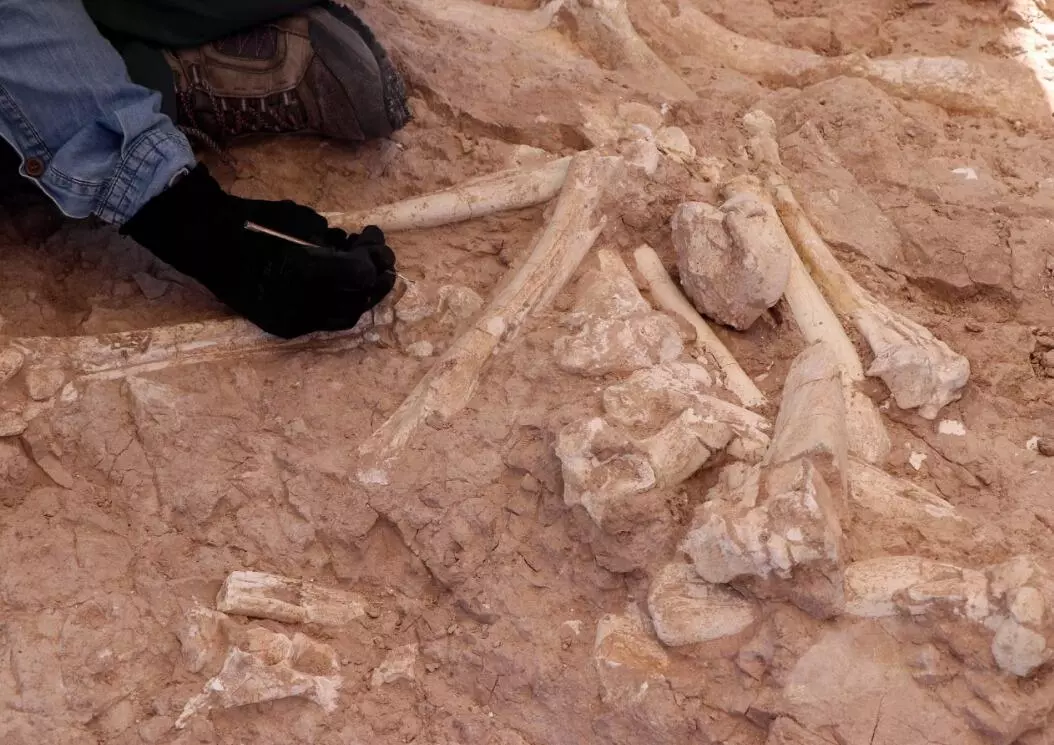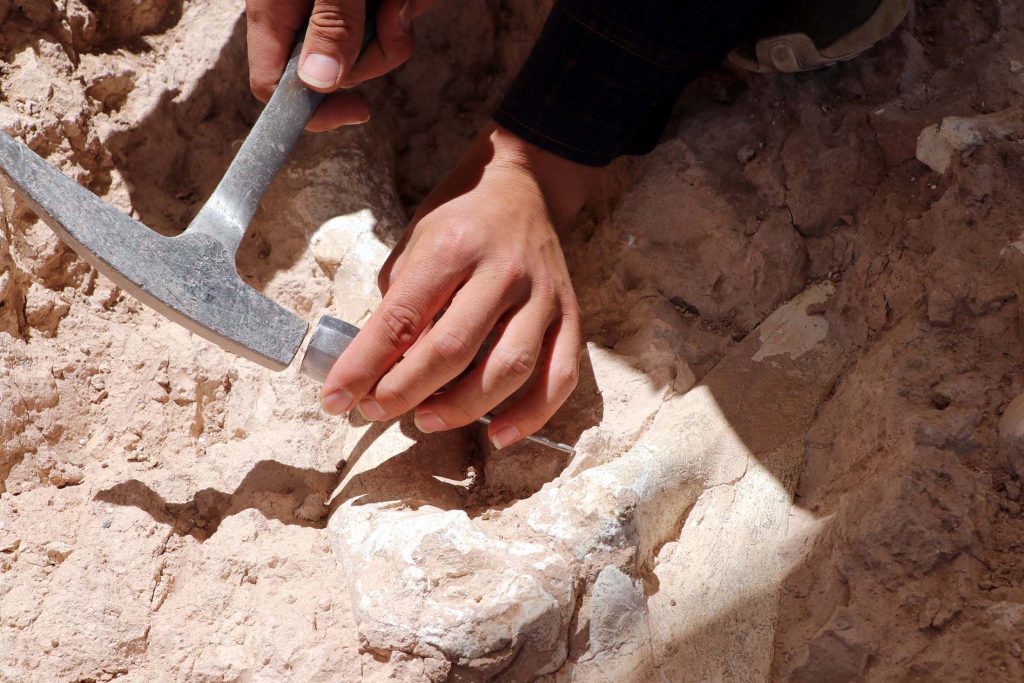
Archaeologists found 7.5 million-year-old giraffe bone in central Anatolia
Archaeologists excavating at a site on the shores of Yamula Dam in the province of Kayseri, located in central Türkiye, found a 7.5 million-year-old giraffe forelimb bone.
Oğuzhan Köylüoğlu, an expert anthropologist, stated that the work at the site started on June 7 and they found nearly 30 fossils. Normally, they would find articulated fossils on horses and “bovidae,” which are the bovine family.
However, this year they found a well-preserved forelimb bone belonging to a giraffe. Köylüoğlu further explained that they have unearthed a total of 612 fossils in the Yamula Dam region, including proboscideans (elephant relatives), giraffids, equids (horse family), bovids, carnivores, and pigs.
Murat Adıyaman, a shepherd in Kocasinan district, found a bone fragment on the shore of Yamula Dam in Taşhan district in 2017. The examination of the samples taken from there revealed that the bone fragments date back to 6 to 7.5 million years ago and then in 2018, excavations were initiated in the area.
📣 Our WhatsApp channel is now LIVE! Stay up-to-date with the latest news and updates, just click here to follow us on WhatsApp and never miss a thing!!
Oğuzhan Köylüoğlu said that the giraffe fossil was intact with no fractures. He said that they encountered other ancient animal remains such as horses, sheep, goats, and antelopes in addition to the giraffe.

Köylüoğlu noted that the unique feature of ancient horse fossils they unearthed is that they have three toes, making them distinct and different from present-day horses. “This belongs to a horse species called ‘hipparion,’ which evolved 7.5 million years ago,” he said.
Köylüoğlu noted that there was a team of 10 people working on the excavations in Kayseri. “During the summer months when the field is accessible, students join the team,” Köylüoğlu added and said they had new methods for excavations.
“Unlike previous years, this year we have implemented a new method for fossil extraction,” he said, adding: “Normally, fossils are initially opened, numbered, and removed individually. However, this year we aim to extract them as blocks. The method we call ‘block extraction’ involves carefully exposing the area where multiple fossils are intertwined, removing the surrounding soil with plaster casts, and performing the extraction process.”
The giraffe forelimb bone, which will be removed from the ground with the plaster jacket method, will be exhibited at a museum.
Cover Photo: AA
You may also like
- A 1700-year-old statue of Pan unearthed during the excavations at Polyeuktos in İstanbul
- The granary was found in the ancient city of Sebaste, founded by the first Roman emperor Augustus
- Donalar Kale Kapı Rock Tomb or Donalar Rock Tomb
- Theater emerges as works continue in ancient city of Perinthos
- Urartian King Argishti’s bronze shield revealed the name of an unknown country
- The religious center of Lycia, the ancient city of Letoon
- Who were the Luwians?
- A new study brings a fresh perspective on the Anatolian origin of the Indo-European languages
- Perhaps the oldest thermal treatment center in the world, which has been in continuous use for 2000 years -Basilica Therma Roman Bath or King’s Daughter-
- The largest synagogue of the ancient world, located in the ancient city of Sardis, is being restored











Leave a Reply